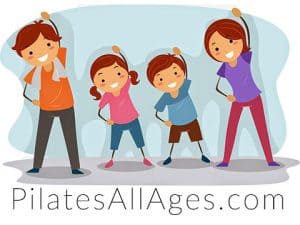Deep breathing is essential for activating the Pilates power center, stabilizing the spine, oxygenating the muscles, and contributing to correct posture. Deep breathing also reduces anxiety, reduces muscle pain and improves performance during activity.
Breathing in Pilates is an essential factor for the correct execution of the Pilates exercises. But do you know why you should teach Pilates breathing?
Much more than just providing oxygen to the body, breathing in Pilates is one of the bases for a perfect execution of the movement, because through breathing we can unite the other principles of the method.
By controlling the breathing cycles we can increase concentration and when we perform forced expiration we contract the powerhouse, for example.
Pilates was already concerned with breathing when he developed Controlegia, because Joseph suffered from asthma problems so he practiced breathing exercises every day.
Teaching how to breathe correctly during the method’s movements can greatly improve your students’ lives, even in terms of anxiety.
Discovering the breathing pattern
To apply the breathing principle to Pilates, you need to find out what your students’ breathing pattern is. This can be done during the assessment, in an individual session, it is from this pattern that you can draw the best training and use the Pilates breathing technique.
Determine if there is good chest wall mobility in all directions, forward, backward, and sideways. If not, we will apply activation exercises, such as placing both hands on the lower part of the chest wall, in front of the back, with the fingers touching the pit of the stomach. As you exhale, let’s try to make these fingers cross. As we breathe in, let’s try to get them to separate again.
Define whether the breathing pattern tends to be clavicular, thoracic or abdominal, with one predominating. In each case, this will change the balance of strength and elasticity of the corresponding muscles (for example, in clavicular breathing, the thoracic part is raised with intervention of the neck muscles such as trapezius, generating a change in the posture of the cervical vertebrae, which may cause hypertension of some of them. Even bruxism, indirectly, can be linked to this type of breathing movement).
If the breathing pattern is clavicular, we will work on shoulder blade mobility exercises first, emphasizing mobility to the sternum, which will certainly be a little stiff. Another tip is to also focus on exercises that open the chest, stretching the fibers of the larger and smaller pectorals.
1) Improved execution of movements
Breathing is one of the principles responsible for much more than just providing the body with oxygen.
The student’s attention during inspiration and expiration can make all the difference in the execution of movements and muscle control, enhancing the effect of exercise and even helping after the activity.
The Pilates Method favors correct breathing, based on strong exhalation and deep inhalation.
2) Relax the body
To perform the exercises, it is important to carefully observe your breathing and use techniques that allow you to relax your body from tension and at the same time work your abdominal muscles correctly.
Deep breathing is essential for activating the Pilates power center, stabilizing the spine, oxygenating the muscles, and contributing to correct posture.
Deep breathing also reduces anxiety, reduces muscle pain and improves performance during activity.
3) Prevents the emergence of respiratory infections
The purpose of the Pilates method breathing technique is to increase the efficiency of expiratory pressure, which is reduced by several factors, such as postural deformity – observed, for example, in Hyperkyphosis, which reduces the distension capacity of the lungs and chest wall – aging and inactivity.
We can say, then, that expiratory efficiency increases the capacity for gas exchange, especially the exchange of residual air, thus maintaining the ideal pH in the lungs and preventing the onset of respiratory infections.
4) Control of emotions
By replacing shallow breathing with deep and conscious breathing, the benefits for the body are many, after all, oxygen is essential for life.
Furthermore, control over emotions improves: the mind becomes more alert and the improvement in health and quality of life is visible.
The application of techniques during physical activities and in everyday life can make all the difference in vitality and in daily life.
5) More disposition
Breathing correctly, the immune system is strengthened, fighting respiratory diseases, migraines and poor digestion with ease; the elimination of toxins is more efficient and there is an improvement in mood and general well-being.
Inspiration
Inspiration should be done through the nose, with the abdomen contracted. By placing your hands on your ribs, you can feel the rib cage moving as oxygen enters your lungs.
Breathing in should be slow and continuous.
Expiration
Exhalation is done through the mouth, while the abdominal muscles are used to aid movement.
In conclusion.
Pilates breathing is a great tool for those looking to improve their quality of life. It is important for the instructor to focus a lot on this principle while teaching Pilates to his client.
This is because one of the differentials of the Method is the rehabilitation of the body, and consequently of breathing.
So don’t forget to find out your student’s breathing pattern and use breathing techniques.
To enjoy all of these benefits, it’s essential to use your chest and back muscles to widen the rib cage at the time of breathing, allowing the lungs to expand without using the abdomen.
This breathing is called thoracic, or diaphragmatic intercostal breathing, and should be done slowly and continuously throughout the exercise.

